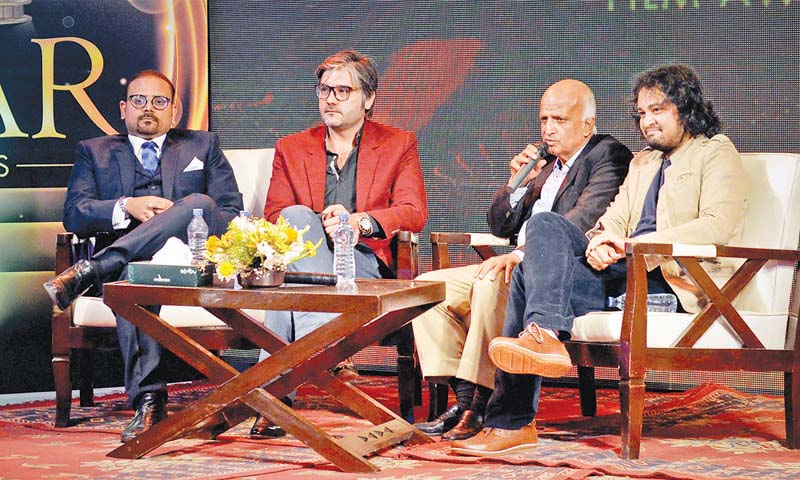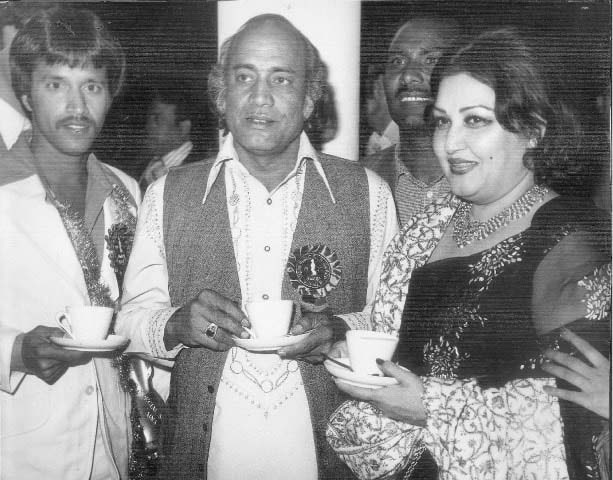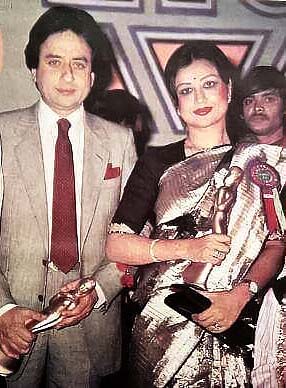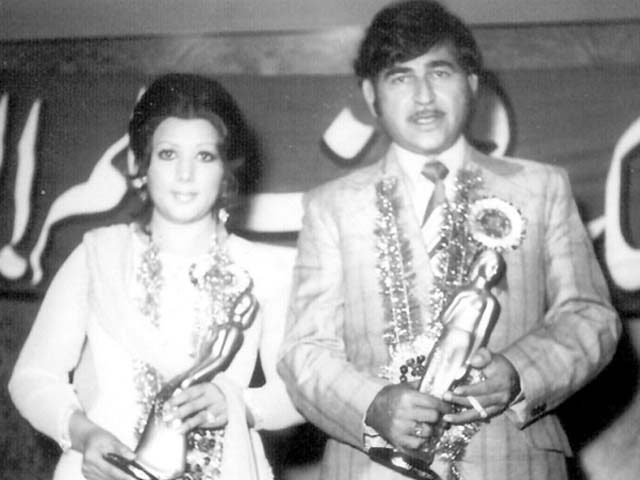Written by: Muhammad Awais
Posted on: April 28, 2021 | 
Ilyas Rashidi and Model Neeli at the Nigar Awards and Shamim Ara and Santosh Kumar Receiving Their Awards from Ilyas Rashidi
Although many Pakistani film historians and enthusiasts are aware of the Nigar Awards, not many young people know about the importance of this event. The Nigar Awards is Pakistan’s version of the Academy Awards, recognizing the talents of the best in the filmmaking fraternity. It has been a reputed institution that has helped solidify the reputation of key filmmakers, actors, musicians and film crew during Pakistan’s cinema history.
After the independence of Pakistan in 1947, Lahore became the centre of the young film industry, with many notable actors, directors and film crew bringing in expertise from India. Amidst this burgeoning industry was a journalist named Ilyas Rashidi, the editor at the Nigar Entertainment Magazine. Rashidi, who is now known as Baba-e-Filmi Sahafat (The Father of Film Journalism) had been cutting his teeth as a journalist for the Urdu magazine Anjum.
As he gained more experience in entertainment journalism, Rashidi was inspired to pay tribute to Pakistani cinema and those working to sustain it. He acquired the children’s magazine Monthly Nigar from a friend, and re-launched it as Nigar Film Magazine in 1948. It was to be the first weekly newspaper dedicated solely to films and Lollywood.
The first Nigar Awards took place in 1957 at Evernew Studios in Lahore to honor the industry’s accomplishments in 1956, with categories like best actor, best singer, best film, best art and so on. Rashidi personally chose the Nigar Award as the statue of an elegant lady wrapped around in film, which he found in a workshop in Saddar Market. This has continued to be the award statue, except for the brief period that the Zia-ul-Haq government forced the organizers to replace it with a textual representation of the word ‘Nigar’. The films Waada and Saath Laakh largely swept the first award show, with the iconic acting duo of Sabiha Khanum and Santosh Kumar bagging the Best Actor and Best Actress award.
Throughout Pakistan’s film history, the Nigar Awards established themselves as an important and credible award show, which rewarded the best of the industry. The jury composed of poets, scholars, producers and senior actors, while ambassadors, politicians and writers presented them. Soon, the Nigar Awards became synonymous with Lollywood, and an award assured a film’s long-term success. They helped propel the star power of Ahmed Rushdi, Waheed Murad, Mussarat Nazir, Shamim Ara and other such stars who are now synonymous with the golden era of Pakistan’s entertainment industry.
Between the years 2002-2017, there was a hiatus in the Nigar Awards ceremony because of external competition and a deterioration of the Pakistani film industry. There were very few good films being made well in Pakistan, and the Nigar organizers did not want to jeopardize their reputation by awarding mediocre films. The Nigar Awards were quickly replaced by the new and more versatile Lux Style Awards in 2002. In addition, the magazine and award show suffered a major hit after Rashidi’s death in 1997, with the awards losing some of their credibility.
The Nigar Awards finally made a return in January 2017 after a fifteen-year break, with Rashidi’s son, Aslam Ilyas Rashidi, at the helm. He lauded the new era of filmmaking in Pakistan, with the production of enough films to resume the awards show which would be decided by the people. However, this new edition of the awards would feature a few modifications to fit the current milieu of the film industry. The event would now take place and be televised in Karachi, the new film capital of Pakistan succeeding Lahore. The categories are now set to include not only the television industry but also regional films like those made in Pashto and Punjabi.

(L to R) Kashif Warsi, Fahad Sherwani, Aslam Ilyas Rashidi and Ali Rizvi at the Relaunch of the Nigar Awards
Despite questions being raised about its credibility and popularity, the Nigar Awards have been synonymous with the development of the Pakistan film industry. It had once been the sole representative of the country’s film accolades for nearly 70 years, and is still regarded as an important part of Pakistan’s film history, respected by artists and filmmakers of the past and the present.



You may also like: